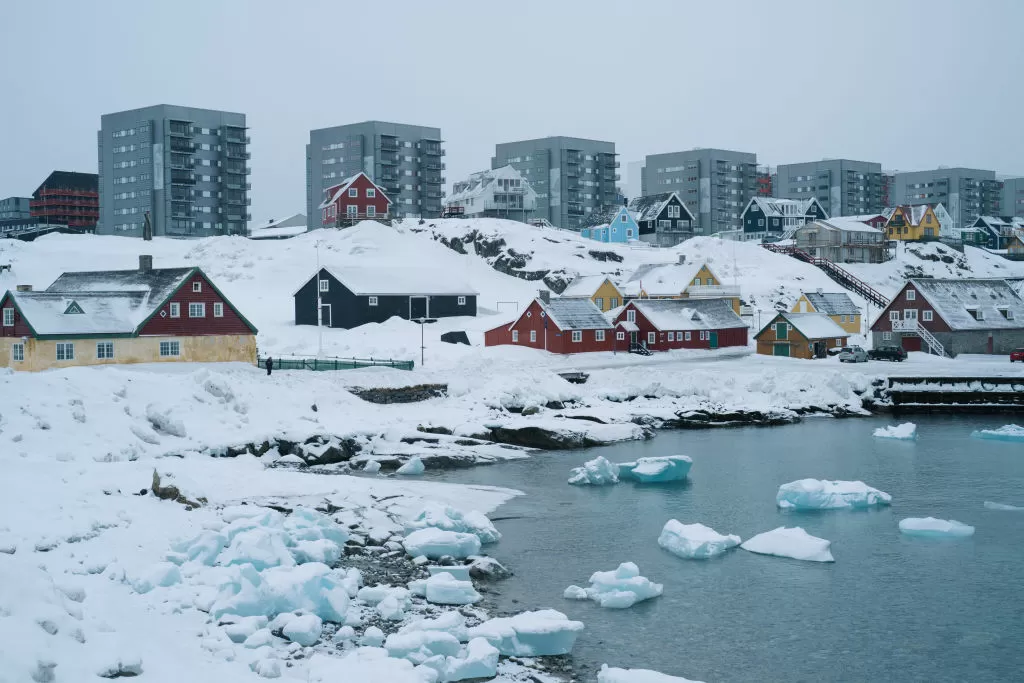As the effects of climate change continue to be felt around the world, one of the unexpected consequences is the opening up of new opportunities in the far north. Greenland, in particular, has been garnering a lot of attention as melting ice sheets and rising temperatures have revealed a land rich in resources and new economic possibilities. However, the reality of this situation is far more complex than it may seem at first glance.
Greenland has long been known for its vast icy landscapes, harsh weather conditions, and traditional way of life for its indigenous population. But with climate change, the country has been thrust into the spotlight as it experiences some of the most significant changes on the planet. The rapid melting of its ice sheets and glaciers has exposed previously inaccessible land, creating new potential for economic growth and development.
One of the most apparent impacts of climate change in Greenland is the increased accessibility of its mineral resources. The melting ice has opened up new areas for exploration and mining, including rare earth minerals such as gold, uranium, and rare earth elements, which are essential for modern technologies. These resources have the potential to bring in significant revenue for the country and diversify its economy, which is currently heavily reliant on fishing and tourism.
In addition to mineral resources, the melting ice has also opened up new shipping routes in the Arctic, making Greenland a crucial strategic location for trade and commerce. This has caught the attention of global players, such as China, Russia, and the United States, who are all vying for influence in the region. As the ice continues to melt, these shipping routes will become increasingly important, providing new opportunities for trade and investment.
But while the economic and strategic potential of Greenland may seem promising, the reality is much more complicated. The country faces many challenges in taking advantage of these opportunities, and without careful planning and management, they could do more harm than good.
Firstly, the indigenous population of Greenland, the Inuit, have a deep connection to the land and their traditional way of life. As the country explores new economic possibilities, it must do so in a sustainable and responsible manner that respects the culture and traditions of the Inuit people. Their rights and needs must be considered in any development plans to ensure a fair and equitable distribution of the country’s newfound wealth.
Secondly, the rapid exploitation of mineral resources and increased shipping activity can have significant environmental impacts. Greenland is home to unique and fragile ecosystems that could be irreparably damaged if not managed carefully. The country must prioritize protecting its environment and wildlife while also taking advantage of the economic opportunities presented by climate change.
Furthermore, Greenland’s infrastructure and governance systems will need to be improved to support economic growth and development. The country has a small population of just over 56,000 people, and its remote location and harsh climate make it challenging to build and maintain infrastructure. Investing in these areas will be crucial in realizing the potential benefits of climate change.
Finally, there is the question of global responsibility and the role of developed countries in addressing climate change. While Greenland may stand to benefit from its changing climate in the short term, the long-term effects could be catastrophic for the entire world. It is essential for developed nations to take responsibility for their contributions to climate change and work towards reducing greenhouse gas emissions to mitigate its effects.
In conclusion, climate change is undoubtedly opening up new economic and strategic opportunities in Greenland. But the reality of this situation is far more complicated and requires careful planning, management, and responsibility. The country must balance its newfound potential with the protection of the environment, respect for its indigenous population, and long-term sustainability. Only then can Greenland truly harness the positive aspects of climate change and pave the way for a prosperous and sustainable future.


